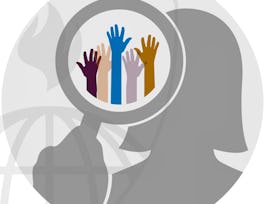This course offers an intimate, story-based introduction to the experiences of six transgender children and their families. Through illustrated stories and short teaching videos, learners will gain a better understanding of gender identity and the gender spectrum. Stanford physicians, K-12 educators, and transgender faculty members offer practical tips for parents, teachers, healthcare providers and anyone who wants to help create a more gender-expansive environment - one in which all people can live authentically. As a global community of unique individuals, we can begin to build a world that is ready to nurture and love each and every child.



Health Across the Gender Spectrum

Instructor: Maya Adam, MD
Sponsored by BrightStar Care
38,109 already enrolled
(2,194 reviews)
Skills you'll gain
Details to know
11 assignments
See how employees at top companies are mastering in-demand skills

There are 3 modules in this course
In module one, we will begin to hear some of the real-life experiences of transgender children, their friends and families. We will gain a better understanding of terms like: gender identity, sex assigned at birth and sexual orientation as well as understanding how these characteristics differ from one another. By the end of this module, learners be more familiar with what it means to be transgender and what it means to have a non-binary gender identity.
What's included
6 videos3 assignments1 discussion prompt
In this module, we will explore some of the gender affirming management options available to support the health of transgender children across their lifespan, including the potential benefits of delaying puberty in transgender adolescents. We will examine the medical classification of transgender and take a closer look at how the diagnosis has changed over time as well as the arguments for and against the need for a medical diagnosis.
What's included
6 videos4 assignments3 discussion prompts
In this module, we will explore some of the concrete steps that healthcare providers, teachers and parents can take to make their clinics, schools and homes more gender inclusive. We will discuss the importance of making basic facilities such as restrooms accessible to all children and we will explore the adverse consequences that can occur when children do not feel safe using public restrooms. We will also discuss the negative health outcomes associated with lack of familial and societal support for the transgender child.
What's included
7 videos4 assignments3 discussion prompts
Instructor

Offered by
Why people choose Coursera for their career




Learner reviews
2,194 reviews
- 5 stars
84.99%
- 4 stars
10.92%
- 3 stars
2.58%
- 2 stars
0.67%
- 1 star
0.81%
Showing 3 of 2194
Reviewed on Apr 14, 2017
Thank you for building and sharing this BEAUTIFUL community, to let us know how inclusive we can be and what it means to love and accept our family and friends for who they truly are.
Reviewed on Sep 28, 2017
Easy to use, great explanations through drawings, interviews and real life stories. I enjoyed this and feel much more enlightened about what it means to be transgender now. Thank you
Reviewed on Dec 29, 2019
This course is indeed informative. Being my first time on Coursera, I am recommending this course to anyone interested in knowing more about gender differences and how we can related with it.
Recommended if you're interested in Health

Johns Hopkins University

University of Michigan

Northwestern University

University of Toronto

Open new doors with Coursera Plus
Unlimited access to 10,000+ world-class courses, hands-on projects, and job-ready certificate programs - all included in your subscription
Advance your career with an online degree
Earn a degree from world-class universities - 100% online
Join over 3,400 global companies that choose Coursera for Business
Upskill your employees to excel in the digital economy


